“Ukraine” is basically Russia, and has been for centuries. “Russia” originated around the capital city of Kiev in 879-1240, or “Kievan Rus.” In those days, they fought many battles with Khazaria, which is certainly an interesting angle. Here was Kievan Rus in 1054:
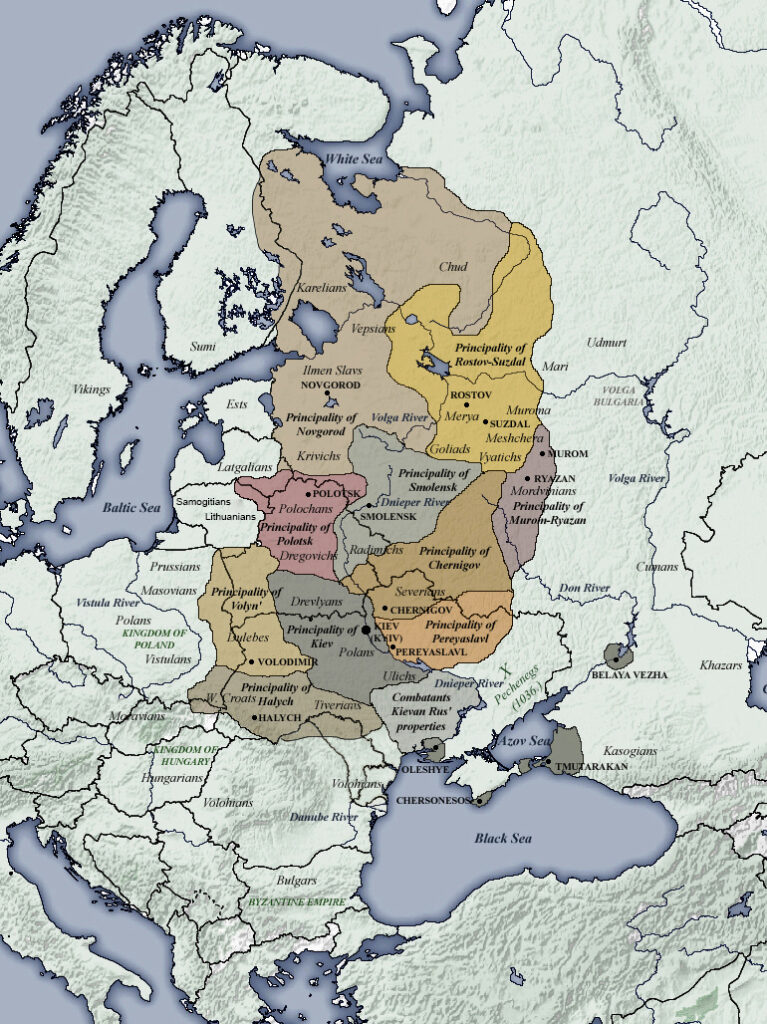
In 1240, the Mongols invaded Kievan Rus, reducing the remnants to vassal states. Here is a record of the Mongols’ path of destruction and subjection in the region:
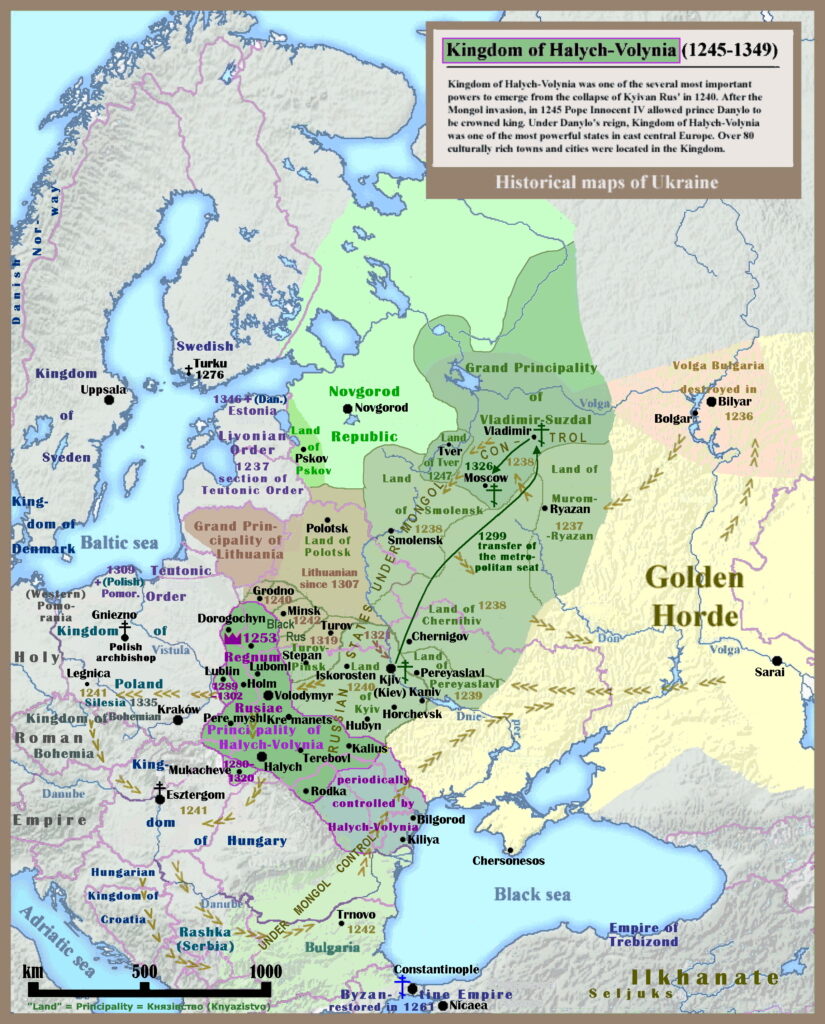
Some of the Rus fled the region and organized in the hinterlands around Moscow, from where they eventually drove out the Mongols from the Eastern lands. However, some of the Rus remained around Kiev. They eventually fell under the rule of the Grand Duchy of Lithuania, which drove out the Mongols from Eastern Europe.
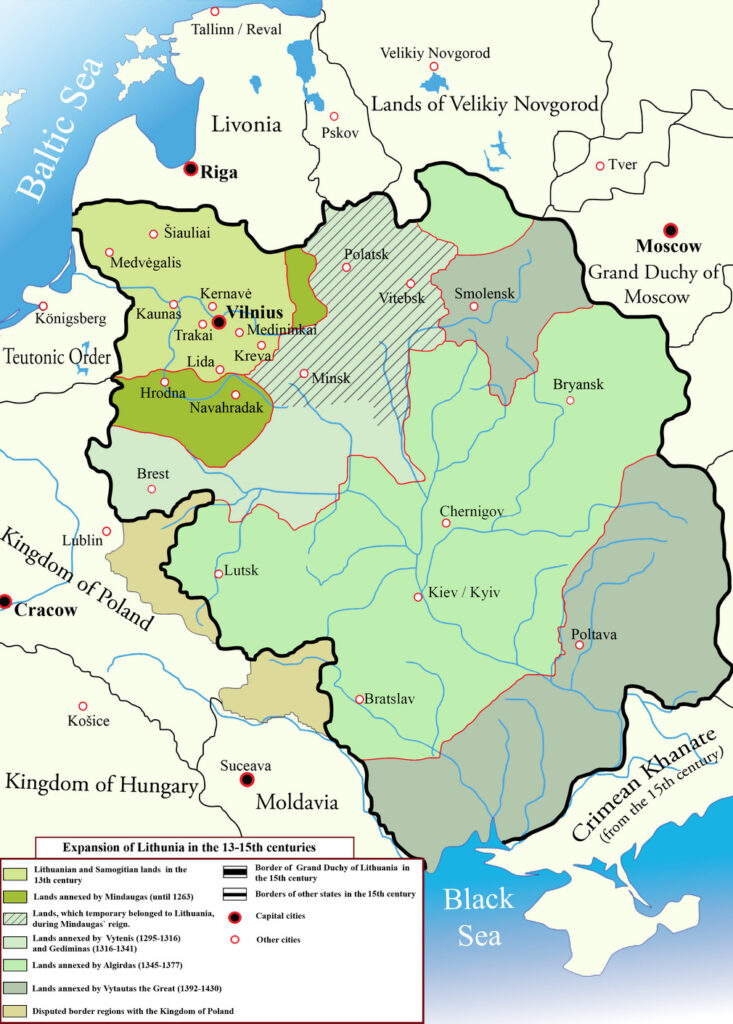
Lithuania later merged with Poland to form the Polish-Lithuanian Commonwealth (aka Polish Empire). Over the centuries, the Rus remaining in the region acquired their own ethnic character, a blend of Russian and Polish influences, and became “Ukrainian.” Here’s a map of the region in 1619, the maximum extent of the Polish-Lithuanian state. We can see that it extended well to the east of Kiev and the Dneiper river.
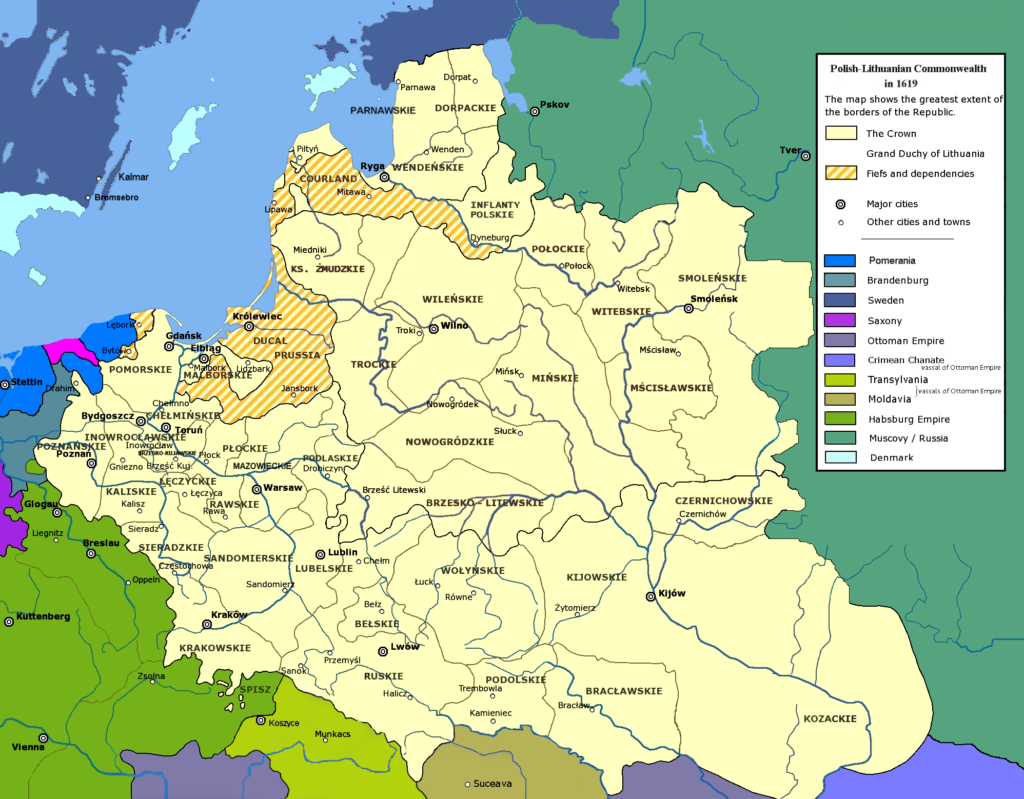
Here we have a map of the expansion of Russia since 1300, as it slowly drove out the Eastern invaders.
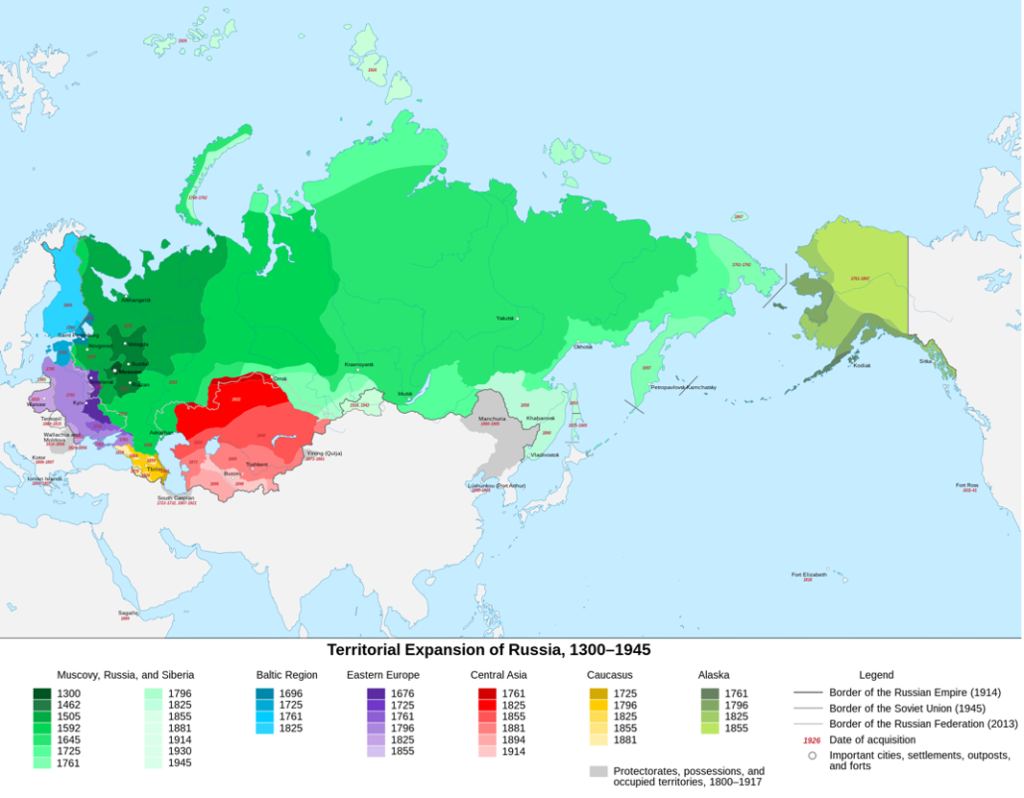
Already by 1657, Ukrainians fought against Polish rule, and signed the Treaty of Pereyaslav with Russia, asking for Russian protection of Ukrainians. This was accompanied by the Russo-Polish War (1654-1667), which ended with Russian control of Kiev and the lands east of the Dneiper, as shown in this map:
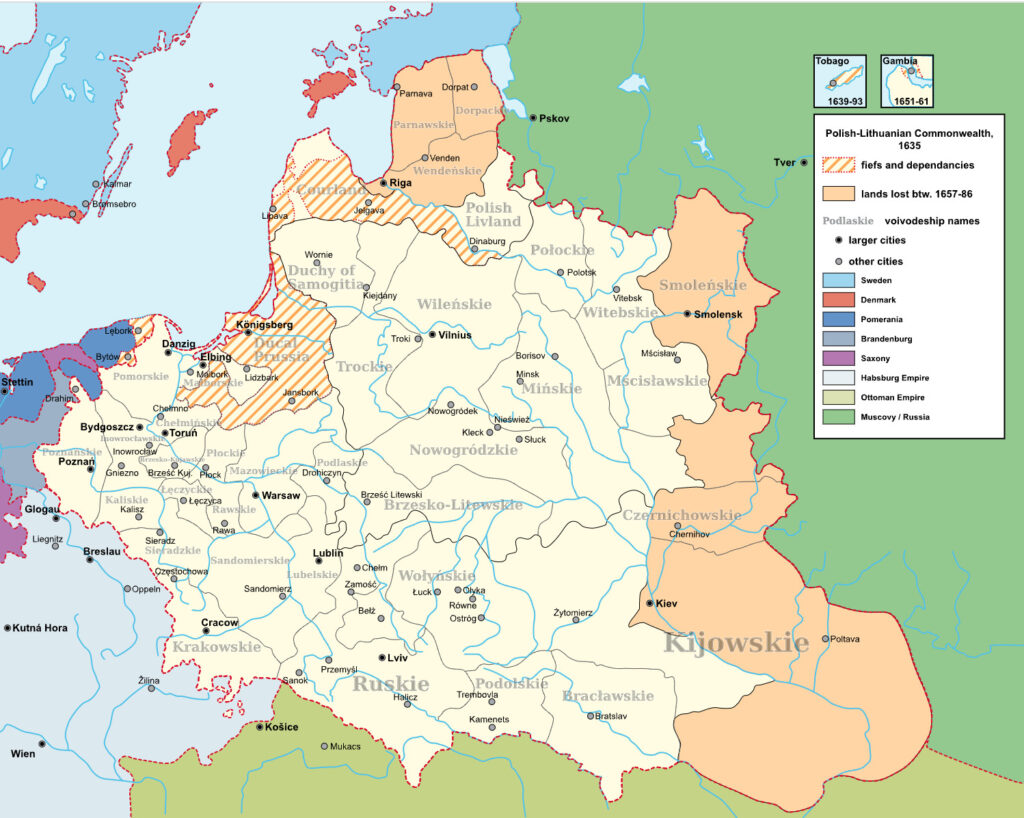
Naturally, over time, this Eastern region became more Russified, while the Western region, still under Polish control, retained its Ukranian/Polish flavor. Note that the southern coast, along the Black Sea, was controlled by the Ottoman Empire. The Ottomans had advanced from Turkey, conquering and ruling the Slavic lands rather brutally.
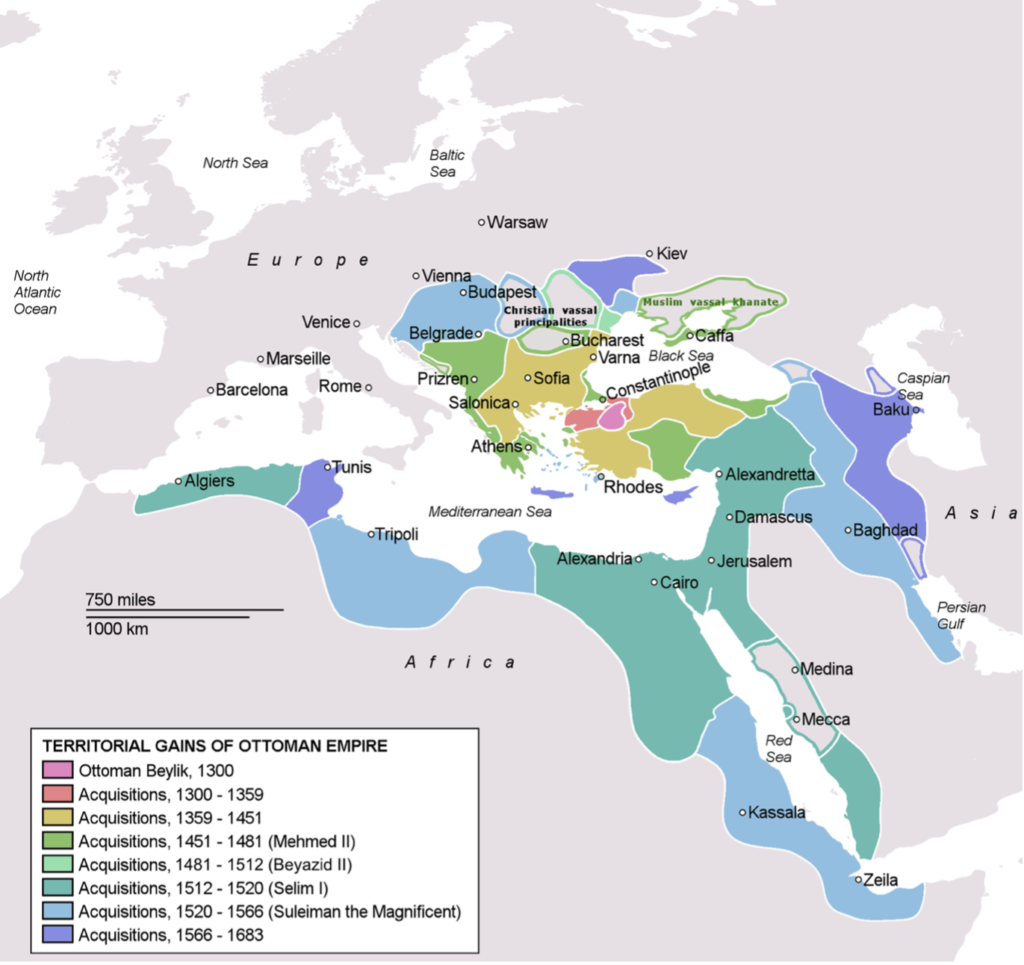
Indeed, the word “slave” derives from “Slav.” Let’s see what the Ottomans (and their vassal state the Crimean Khanate) did to the Slavs of today’s southern Ukraine:[1]

In 1772-1795, a decrepit Poland was partitioned between Russia, Prussia (Germany) and Austria:
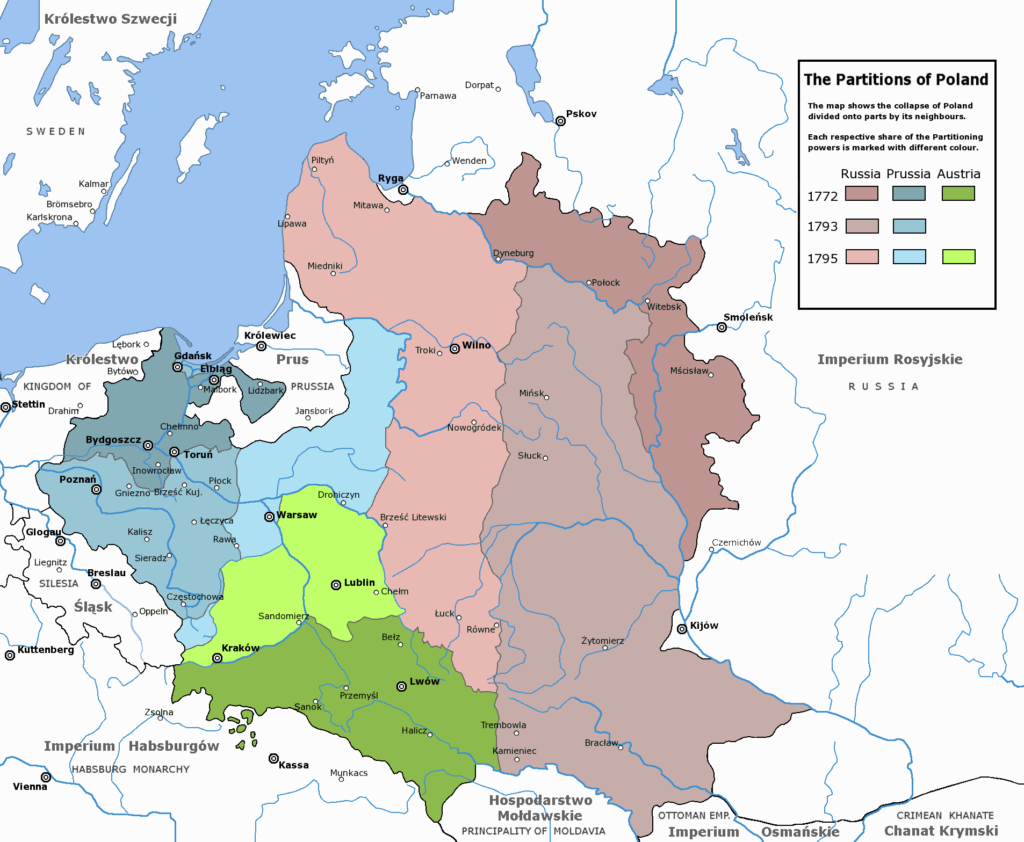
Now Russia controlled almost all of present-day Ukraine, up to the outskirts of Lvov, which was controlled by Austria. This Austrian region was known as Galicia.
Russia also kicked out the Ottomans in the Russo-Turkish War (1787-1792), gaining control of the Black Sea coast. I can imagine that these Slavs were rather happy to be back under Russian rule. This led to the establishment of Odessa in 1794, by a decree of Catherine the Great of Russia. Previously, there had been only some small towns in the region. In 1774, after centuries of Russian battles with the Ottomans, Crimea also passed to Russian control. In 1783, a Russian naval base for the Black Sea Fleet was established at Sevastopol in Crimea. It remains today the primary Russian naval base in the region. There was no Russian “invasion” of Crimea in 2014, since it was already occupied by the Russian military under pre-existing treaties with Ukraine.
Here is a map of the ethnicities of Russia on the eve of World War I. Ukrainians were considered “little Russians,” of the same Slavic source, and included in one overall pink color.

After World War I, Poland reappeared, created out of the ashes of Austria at the Treaty of Versailles. Here is how it looked in 1937:
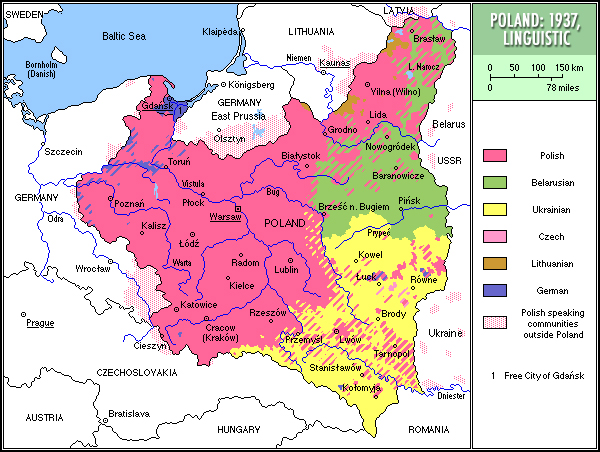
Now Lvov, to the West, is again under Polish rule, while Kiev is still Russian. Stalin treated the Ukrainians rather badly, in the Holodomor or Great Famine of 1932-33, where possibly 7-10 million Ukrainians died. While Ukrainians had been relatively happy under pan-Slavic nationalism prior to World War I, this now led to the rise of Ukrainian Nationalism, and, understandably, dissatisfaction with Soviet rule. Thus, when Germany invaded the Soviet Union in 1941 — only eight years after the Holodomor — many Ukrainians joined the German side, becoming anti-Russian. Ukrainians around Lvov had been part of Poland, and before WWI, part of Germanic Austria, and also didn’t like the Soviet communists much. This included the adoption of Nazi nationalistic ideology. This movement was led by Stepan Bandera, which is why recent Ukrainian anti-Russian nationalism, whipped up by state propaganda from the US-controlled puppet government installed in 2014, is overtly Nazi today. Some Russian commentators refer to the Ukrainian-dominated regions to the West around Lvov as “Banderastan,” where the majority of the population has allied with these nationalistic notions.
After World War II, the Soviet Union took the region around Lvov, while the remaining Poland fell under Soviet rule as part of the Warsaw Pact.
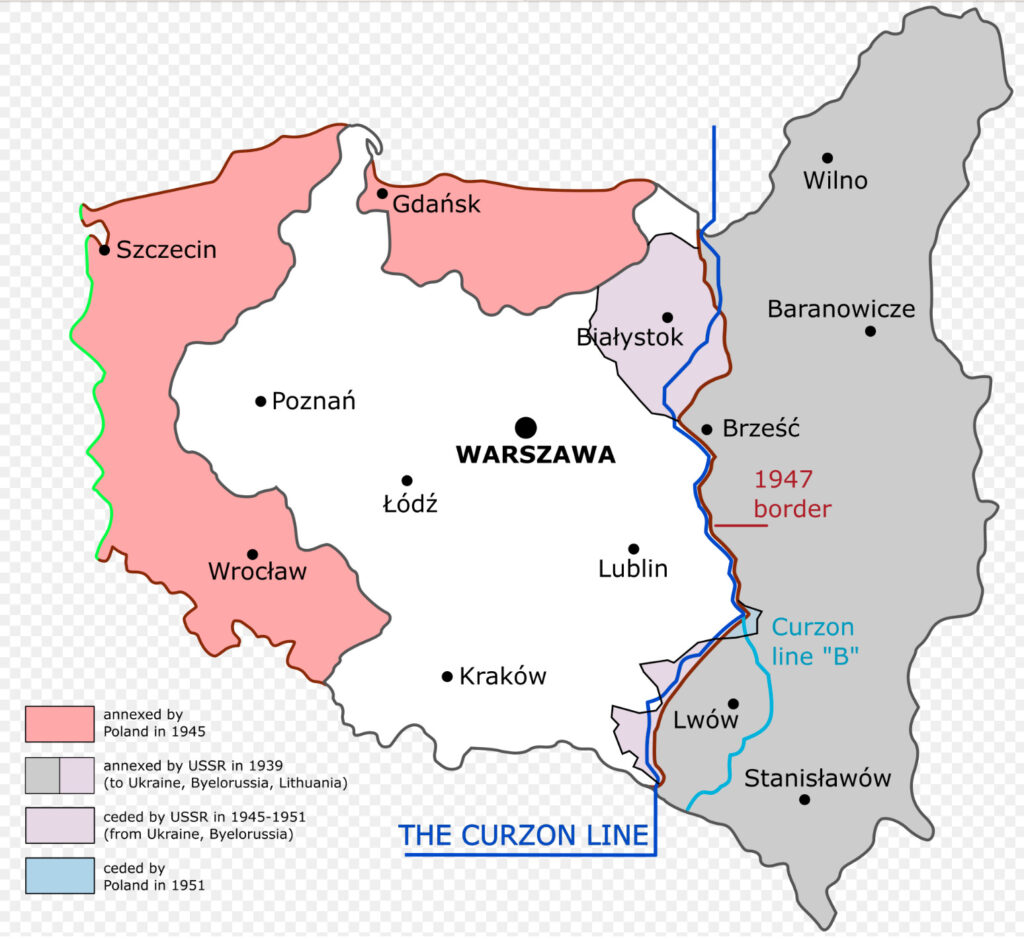
Thus we can see why I say that “Ukraine is Russia,” since the region around Kiev and to the east of the Dneiper, as well as the South around Odessa and Crimea, has been part of Russia since the seventeenth and eighteenth centuries; and more broadly Slavic since time immemorial, even if ruled by foreign Mongols and Turks. The Western regions around Lvov have a little different history, and if today’s ethnic Ukrainians, now hopped up on anti-Russian Nazi-flavored propaganda, would rather live under Polish rule, I don’t think any Russians would have a problem with that. They aren’t Poles either, but that would be Poland’s problem. We can also see why the Russian military has been taking great pains to avoid civilian deaths — these civilians are basically Russians living in the traditional Russian homeland, in Russian cities that they don’t want to destroy — while the Ukrainian military has been eagerly using civilians in the East as disposable “human shields.” Russians, who have not been pumped full of anti-Ukrainian propaganda, still regard Ukrainians as their Slavic brothers, to be rescued from nefarious US neocon brainwashing, or “denazification.” Here is a 2015 photo of the Ukrainian nationalist “Azov battalion,” soon after the 2014 coup, showing Azov, Nazi, and NATO flags.
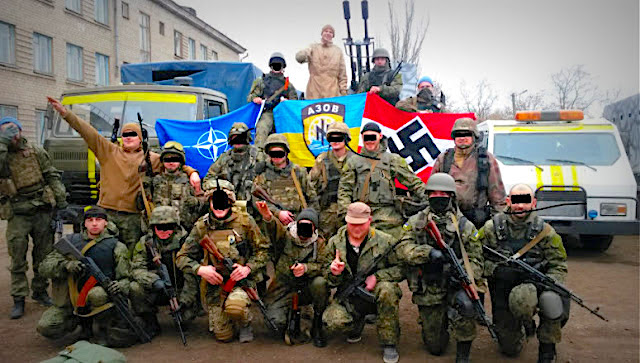
The Azov symbol is a rather notorious “Black Sun” design.[2]
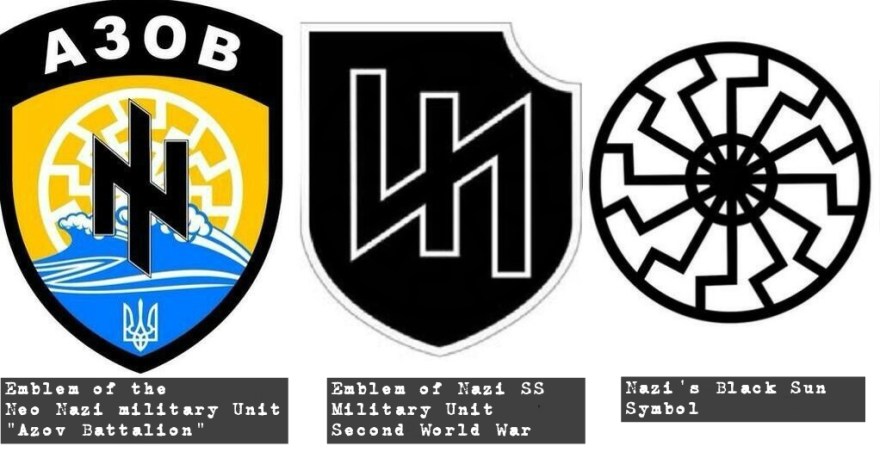
It has reappeared in recent (2022) photos of Ukrainian soldiers.


Here is a map of people who considered Russian (not Ukrainian) as their “native language” in 2001:
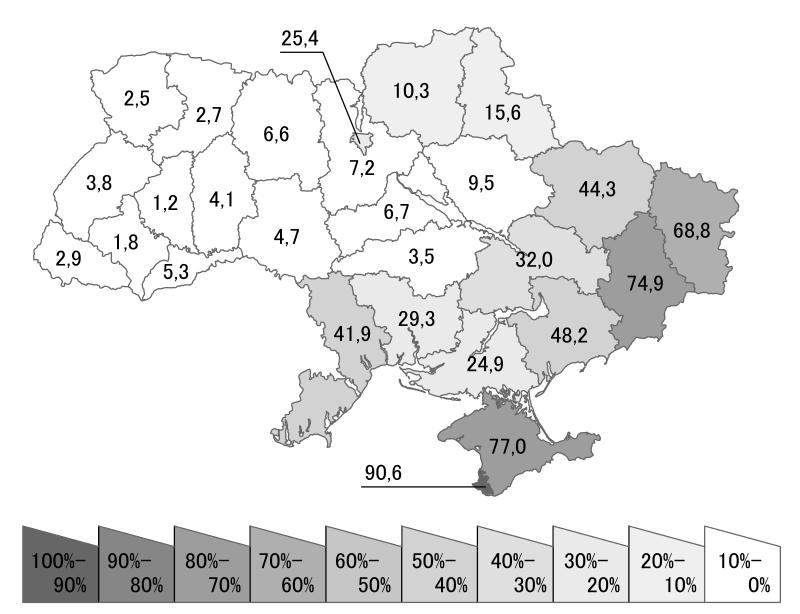
Much of the center of Ukraine consists of its famous “breadbasket” farmlands, so there is not much population in Ukraine west of the Dneiper outside of Kiev to the north, Odessa to the south, and Lvov to the west.
The Saker (thesaker.is) remains the best source of Ukraine news, with a pro-Russia stance. (Note: recently gone dormant; but has links to others including Andrei Martyanov and Col. Doug MacGregor.) Other worthwhile sources include: William Schryver (imetatronink.substack.com), Black Mountain Analysis (bmanalysis.substack.com) and Big Serge Thoughts (bigserge.substack.com). Intel Slava Z on Telegram provides up-to-the-minute updates.
[1] https://en.wikipedia.org/wiki/Slavery_in_the_Ottoman_Empire#Ottoman_slavery_in_central_and_eastern_Europe
[2] https://en.wikipedia.org/wiki/Black_Sun_(symbol)
https://orderoftheblacksun.com/publications/

